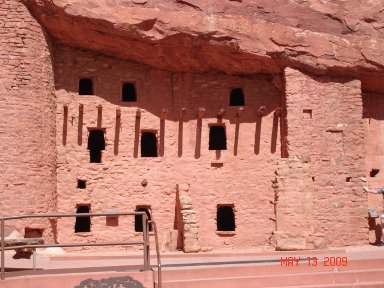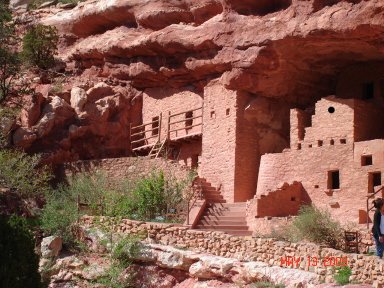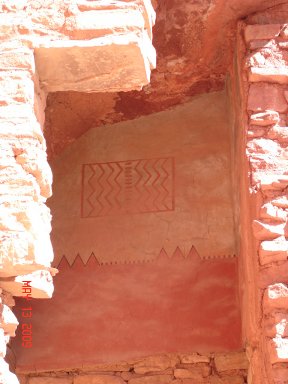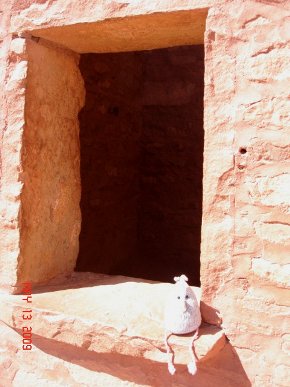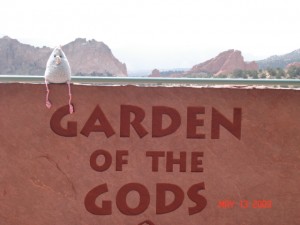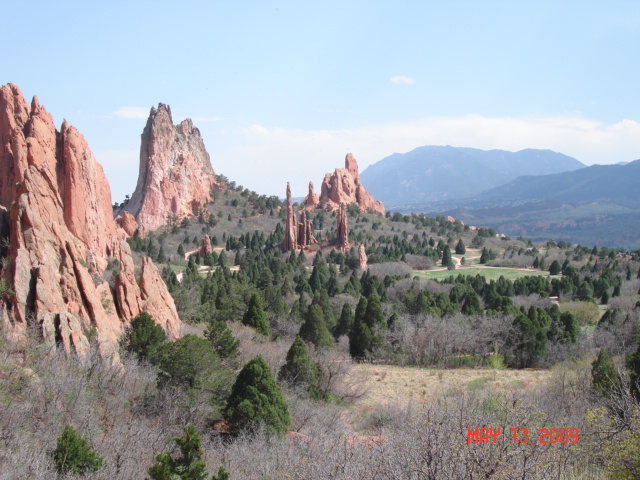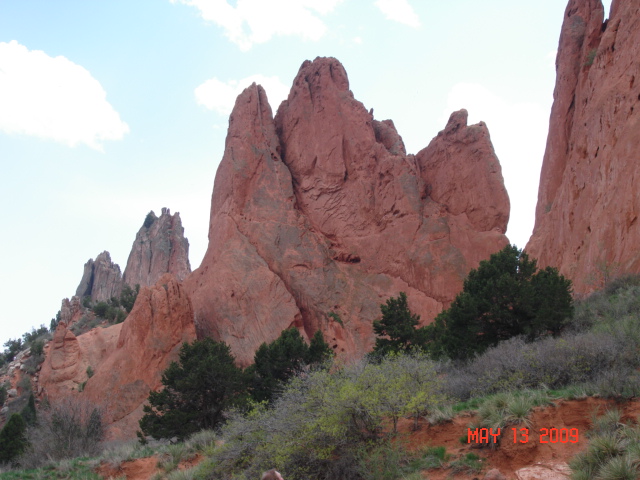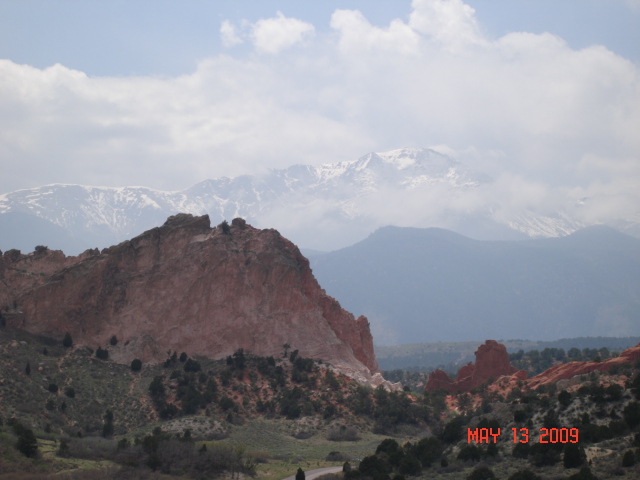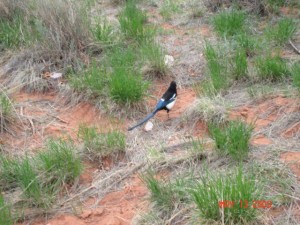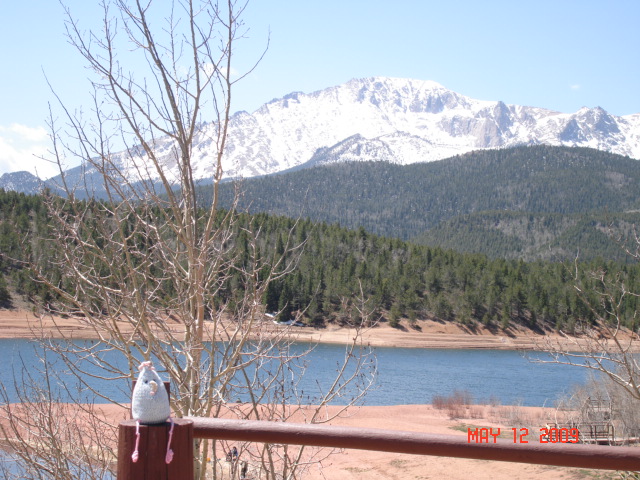
Pikes Peak viewed from Crystal reservoir.
It took us a few days to acclimate to the high altitude. The first day, we were so out of breath we didn’t have the strength to move. 7000 feet is hard on two Floridians accustomed to elevations of less than 100 feet! There are two main ways of going to the summit of Pikes Peak, one is by cog train, the other is by car. We chose the latter, just because we knew that we would be in control and if we were starting to feel dizzy with altitude sickness, we could turn around.
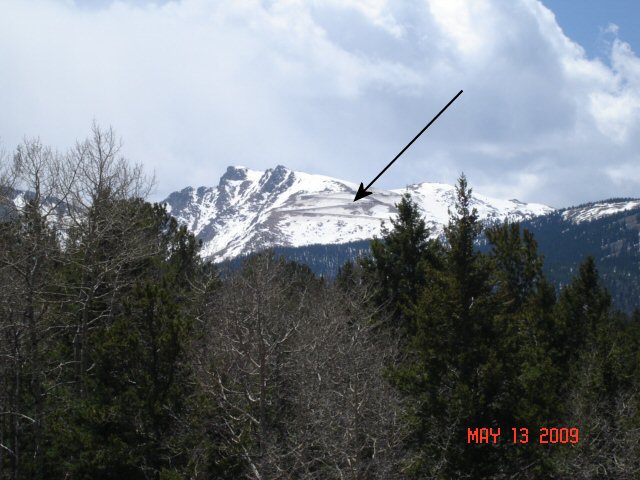
The "W's"
We made it as far as what they call locally, the “W’s†(12, 825 ft). A series of hairpin turns, with no guard rails (I was scared to death), and at that altitude, the absence of vegetation and trees (the soil is permanently frozen; permafrost), make the experience even scarier because of the feeling of openness and the fact that you can really see the “drop†on one side of the road. The road was closed because of the snow after 13, 000 feet anyway. What a view though! Well worth the fear!
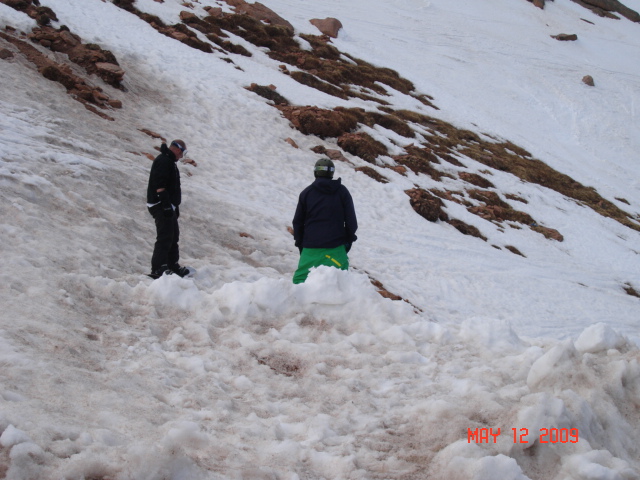
The two kids preparing to snowboard downhill
This is where we saw the two kids who had hitched a ride up with their snowboard (they left their car way down) and were preparing to snowboard down the mountain. Doug told them that they were certifiably crazy, but they laughed it off. We saw them later near their car, they had made it!
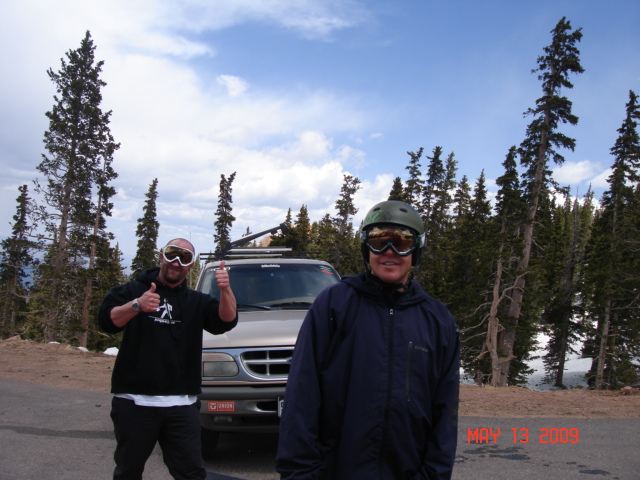
They made it!
For those interested by a bit of geology: Pikes Peak is a massive block of billion-year old pink Precambrian granite. The mountain rock contains interlocking crystals of quartz, a touch of black and white feldspar and a dash of hornblende and black flaky mica. (No I am not a geologist, I read that in a book…)

View from the about 12, 000 ft.
Interesting facts:
Before the Americans, the Utes (they called themselves “Yuttaaâ€) were the feared rulers of the Pikes Peak region for centuries. (They called the area the Shining Mountains). They believe that they always lived in Colorado, but they probably arrived 800 years ago. Their territory stretched from the Front Range westward for 450 miles into Utah (the state named for them). It encompassed the mountains northward into Wyoming and south into New Mexico. It included 150, 000 square miles of America’s most beautiful mountain wilderness. They were fierce warriors and succeeded in protecting their territories for hundreds of years. In the 1860’s though, their days were numbered, and finally in 1880, they were banished from their Shining Mountains. Today, Utes retain three separate reservation lands containing vast deposits of energy resources.
The first “known†Americans who tried to conquer the ascension of Pikes Peak was Lt. Zebulon Montgomery Pike and 22 enlisted men. They did not make it. The mountain retained the name because Lt. Pike was the first to describe it. The first one who actually made the climb was Dr. Edwin James in 1820. In the process, he and his crew set fire to hundreds on acres of land (they did not extinguish their camp fire). Someone must have done it before him, but there are no records of it. Archeological sites do suggest that the Indians were mountaineers and evidence of eagle traps and signal fires have been found atop some of Colorado’s highest peaks. In 1858, Julia Archibald Holmes became the first woman to conquer the summit.
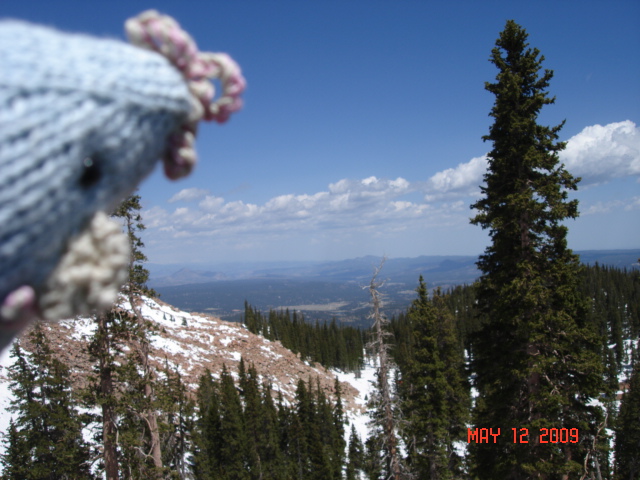
The view from Pikes Peak inspired the song “America the beautifulâ€.
Pikes Peak or Bust
This was the slogan of the 1858 Colorado gold rush. The Peak itself was not really home to the precious metal, but it stood as a landmark for west-bound fortune hunters. Information on routes and trails was sparse and often misleading. Some of the guide books seemed to compete for the number of embellishments and outright lies they contained. One of them stated that gold could be easily gathered by merely climbing to the summit of Pikes Peak, since nuggets of gold lay on the ground like a golden necklace. The guidebook further instructed the miner to cut several stout trees from the summit (there a no trees at the summit), make a raft, and glide off the mountain on a surface of gold-bearing rock. The guidebook assured that the descending raft would plow up ground on the way down, imbedding even more gold in the raft itself, which could be extracted when the foot of the mountain was reached!
Fun fact:
In June 1929, Bill Williams of Rio Hondo, Texas, pushed a peanut to the top of the Peak with his nose. It took him 20 days to make the trip. In the process, he wore out 170 pairs of pants, a dozen pairs of cotton gloves and three pairs of shoes. There is no account of the durability of his nose…
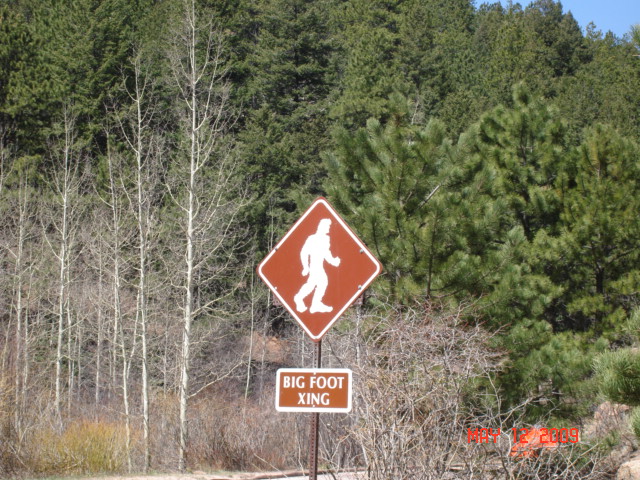
huh?
Average Rating: 5 out of 5 based on 231 user reviews.
